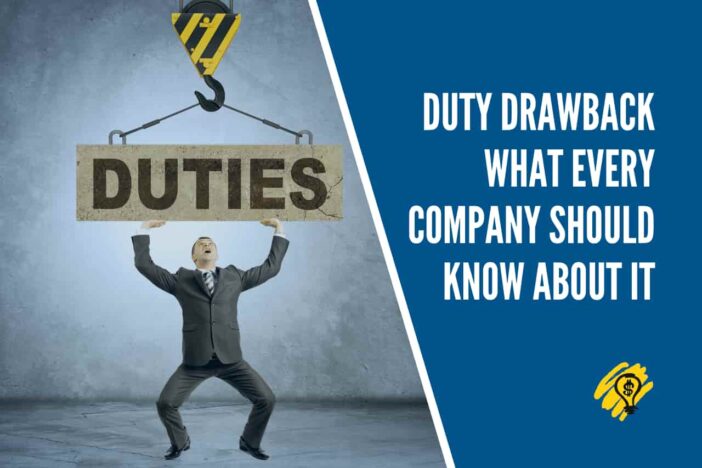Duty drawbacks refer to the refund of specific fees, internal revenue taxes, and duties paid on the value of goods imported into the United States. Regarding the US Customs and Border Protection (CBP), the refunds would only be paid if the imported goods were destroyed or re-exported.
Duty drawback is one of the limited numbers of programs allowed by the World Trade Organization. It gives the importers the ability to reclaim high costs associated with the imported goods under specific circumstances.
Duty drawbacks are of several classes. As an importer, you can apply for refunds on a single export or take part in an ongoing drawback program for their imported goods. You can also claim drawbacks refunds proactively on shipments that have taken place within five years.
Types of Drawback
Depending on the type of goods you deal with, your business type, and the specific circumstances of the export and import of your goods can qualify you for drawback refunds.
Below are some of the common forms of duty drawback claims:
Direct Identification
There is usually a direct relationship between the identified duty-paid goods and the claimed exported goods. This is done through a specific identification called original importation identifier or through a different approved inventory method like first-in, first-out (FIFO) or a custom approved accounting method like low-to-high.
Rejected Merchandise Drawback
Defective merchandise or goods that do not live to the specifications or sample. And items shipped without the consignee’s consent or returned products might claim refunds under rejected merchandise drawback.
Manufacturing Drawback
This drawback refers to duty-paid or imported components used to manufacture goods that you would subsequently export. Duty paid for imported materials is usually documented and traced throughout the manufacturing and export. This ensures that it is eligible for duty drawback.
Petroleum Drawback
If you have finished petroleum derivatives that have had the duties paid upon importation and are subsequently exported within 180 days, you can get a drawback.
In addition, if crude petroleum or its derivatives are used to manufacture further derivatives, which are exported, you can claim drawback under the manufacturing drawback law. This export has to take place within 180 days of manufacture.
Unused Merchandise Drawback
Unused Merchandise Drawbacks are imports that maintain their new condition and are intended to be re-exported. Unused Merchandise Drawback cargoes usually require examinations before you can re-export them.
How To Claim Your Duty Drawback
There are various types of duty drawbacks. Therefore you must note that one size doesn’t fit all. An alternative scenario would lead to several qualifications. If you are looking to claim your duty drawback, a significant factor you should consider is working with a drawback expert.
When you work with a drawback expert, they will provide a drawback estimate and timelines tailored to your organization’s strategy. Additionally, the necessary import data would be gathered, processed, analyzed, and, when ready, submitted to the US Customs and Border Protection (CBP).
Submission supply takes a couple of weeks. Then, all you need to do is provide the documentation, including a copy of the bill of entry, lading, import invoice, duty payment proofs, and other necessary documents.
How To get Customs Duty Drawback Rates
How is the rate of Customs duty drawback decided by the government? For example, is the rate based on the quantities used in the manufacturing process?
Duty drawback rates are usually decided based on several estimates, technical calculations, the specific industry’s importance, etc.
It is usually given to the quantities used in the manufacturing and production of materials and goods that are later exported. The main documents that are generally required for submission to the system’s authority to claim duty drawback include:
Bill of entry
The main shipping document is issued by the shipping agent.
Export invoice
This is the exporter’s invoice to the customer who is located in a different country.
Export shipping bill
This is the primary shipping document that the shipping agent issues before exporting.
Export packing list
This is the cargo list which shows the packing of goods and the quantity description.
Duty payment receipt
The receipt for customs duty was paid.
Import invoice
This is the invoice of goods which shows the description, quantity, total value, rate per piece, etc.
Import shipping bill
This is the main shipping document that the shipping agent issues.
That’s A Wrap
If you own a business that imports and exports out of the US, then it is vital that you know how the quality of duty drawbacks is essential to your business. You should refer to this post if you or anyone ever gets confused about duty drawbacks and how to go about it.





